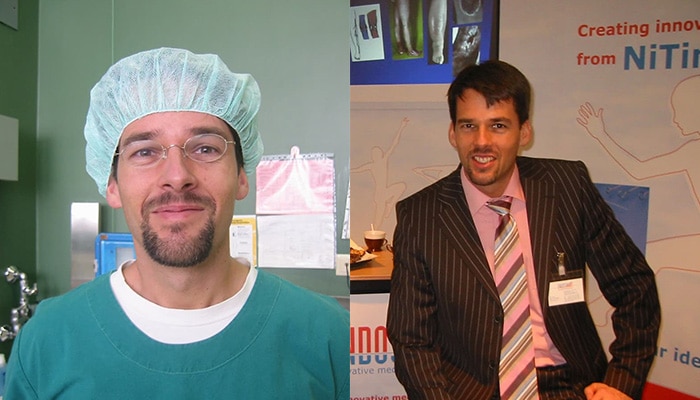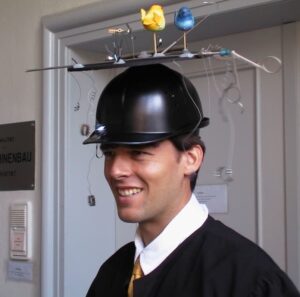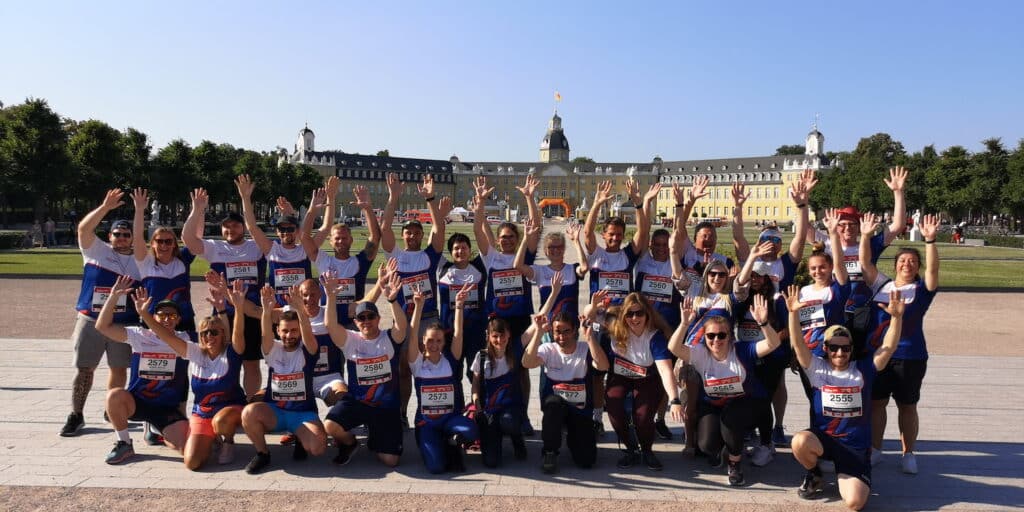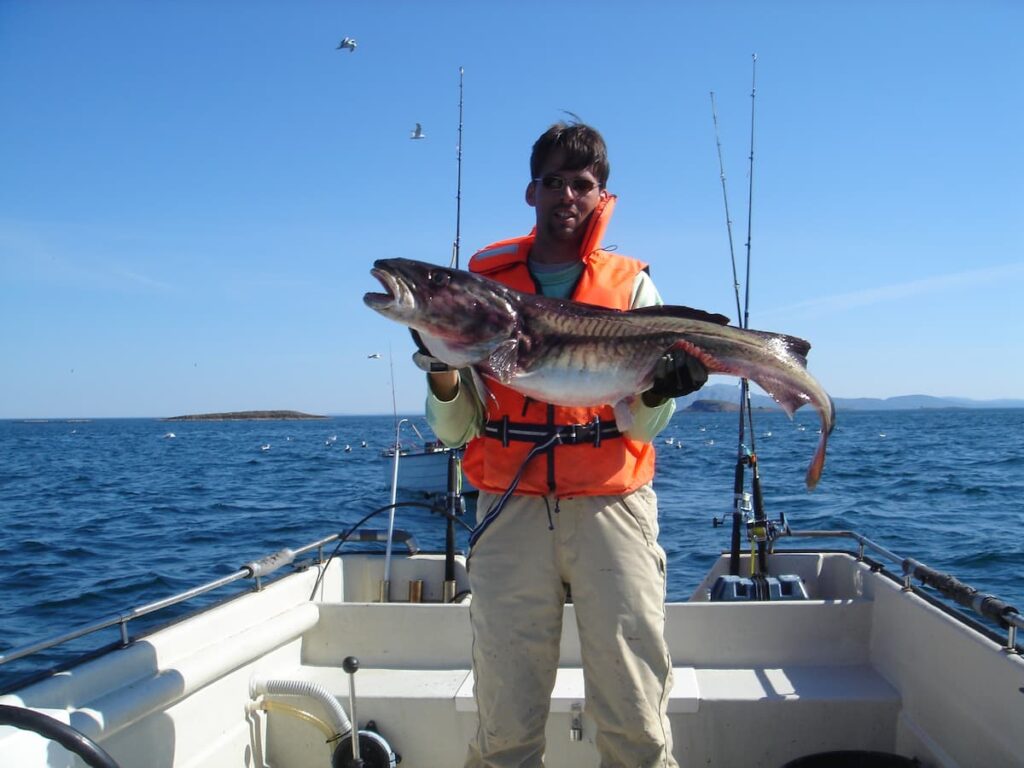My MedTech Life: ENDOSMART’s Bernd Vogel
Welcome to our blog series sharing highlights from conversations with Chamfr sellers, the leaders of companies that are helping to shape and drive the medical device industry forward.

This month, we spoke via videoconference with Dr. Bernd Vogel, CEO of ENDOSMART, a company recently acquired by Alleima® Group. Based in Karlsruhe, Germany, ENDOSMART is a full-service provider bringing deep knowledge of nitinol processing to give shape to complex nitinol structures.
Bernd was a researcher and leader of the Smart Material Development Group (focusing on nitinol) at Karlsruhe Institute of Technology when he began the step-by-step process that led to the founding of ENDOSMART in 2002.
How did you make your career choice to study mechanical engineering?
Both my grandfather and my father were teachers, so it seemed obvious that I also would become a teacher. I liked math and science because everything is black or white in that world—nothing in between. Just before I started university, I was afraid that teaching would become boring, teaching the same material year after year, so I switched to mechanical engineering. What appealed to me was that if we design a product, it either works or doesn’t work—nothing in between. If it doesn’t work, we make it work. That’s my world.
When did you first start working with nitinol and become aware of its potential in the medical technology industry?
Two of my professors at university also had seats at the Karlsruhe Research Institute (KIT), where they were working with a German company on a steerable endoscope that could be deflected up to 90°. To finish my master’s work, my challenge was to design a hingeless version, meaning a tube that was slotted from one side to make it steerable. To avoid hinges, we needed an extremely elastic material with a diameter of 10 mm. That tubing material didn’t exist, so I made a tube out of a nitinol sheet, structured the tube with a laser, and integrated a push/pull wire. The result was the first deflectable chip on the tip of an endoscope. It gave surgeons a completely new vision of the operating field.
You could say that’s when I fell in love with nitinol. I’m married two times: to my wife and to nitinol! Everybody in the nitinol community sticks with this field because it’s so fascinating and there are so many opportunities.

What motivated you to make the transition from researcher to entrepreneur?
Entrepreneurship was not in my plan. But then I figured that if someone was going to make money with my ideas, it should be me! With the nitinol-processing knowledge I had from my master’s and PhD work, I understood the potential of the material and presented research results at conferences around the world.
Medtech companies asked for more and more samples, so I knew there was a need. I tried to develop contracts within the research center to produce some prototype units, but it was very difficult and took too long. I realized that if I didn’t do it, someone else would.
So, the engineering office of Bernd Vogel was born, and I was allowed to manufacture nitinol instruments on a part-time basis. That side job quickly involved more and more hours. Other parties became aware of it, and step by step, ENDOSMART was founded.
What were some of your greatest challenges in the early years of ENDOSMART?
Getting venture capital in Germany was not easy at that time. We developed 21 different versions of our business plan to pitch it to various audiences and entered many business plan competitions. Most of the money we made in the first two years was through these competitions, and it allowed us to hire a few employees.
We started the company with some very innovative projects; for example, a nitinol valve and a cuff for a vascular application. But it was a completely new therapy that would have taken a lot more time and money to be successful. Most of the time when you start a company, you’re successful not with the technology you started with—things often change over time.

So we looked at the field and said, “OK, we’re experts in nitinol. Where is there a need for innovation without developing a completely new therapy?” That was the basis for starting in urology with retrieval devices, which we could make more innovative by applying our nitinol ideas in these platforms.
What advice or lessons learned would you give someone who’s thinking of starting a medical technology company?
- Keep your idea simple—it will become more difficult all by itself
- Always stay optimistic and have passion for what you do
- Don’t hesitate to try out ideas, even if they don’t work at first
- Focus, focus, focus
- Take a deep breath
What is the coolest product that ENDOSMART technology has been a part of?
Tipless retrieval devices integrating our innovative guidewire technology to stabilize the device. With the first iteration of our device, sometimes things happened that our surgeon customers couldn’t explain. So, I went into the Operating Room several times until I understood what the surgeon was doing and realized what could happen which is something I never could have imagined without seeing it myself. A completely new design and product evolved out of this experience. We patented this tipless retrieval device with guidewire and now we’re producing more than 100,000 units per year.
The best things have happened at ENDOSMART when we’ve run up against a problem and worked relentlessly until we solved it.
What can ENDOSMART do that no one else can?
One way we’re different from other nitinol companies is that we are a full-service provider. We develop the entire finished device in house, leveraging the nitinol component with particular expertise in how the material can optimize the device’s design and functionality.
That wasn’t our plan at the beginning. When we started the company, we thought of ourselves as material scientists who specialized in nitinol and knew how to process the material itself. At first, we only wanted to make the nitinol component and do the processing in house. But we ended up giving out technology know-how when we delivered the components because the customer wanted to attach, apply, join, or do something with the component. In the end, if the whole device didn’t work, the nitinol component took the blame. The result was that we decided to integrate everything: build up a cleanroom, develop tubes and handles, and make the complete product in house. Then if something goes wrong, we know it was our mistake and we can find out what the problem was. It ended up becoming something special about ENDOSMART that is very important.
What are the top 3 things you’d want a design engineer to know about ENDOSMART and its expertise?
- When nothing else works, consider using nitinol!
- We can help you understand the unique properties of nitinol and how you can leverage them in the medical sector.
- ENDOSMART is on the leading edge of nitinol technology. Compared with other materials, nitinol is still a young material in medical applications and holds a great deal of opportunity for the future.
What appealed to you about partnering with Chamfr? Why is it a good fit for ENDOSMART?
When I first heard about Chamfr, I thought, “Great idea! Why didn’t I think of it?” It was clear that this would work. It’s difficult to specify the perfect geometry design in the first iteration without having something in your hands—design engineers need something to play around with and get a feel for the behavior of the component.
The whole medical device world has the same two problems. If you want to get samples you have to first order a minimum amount of raw materials and then you have to wait weeks, often only to find out it’s the wrong dimension. The Chamfr platform solves both problems by providing in-stock components at low volumes. It’s perfect because even though engineers have to do more iterations after they receive first components from Chamfr, it speeds up the early stages of product development and makes innovation much easier.
In the next 3-5 years, what do you see as the biggest growth opportunities for nitinol?
In my presentations, I always talk about how our body comprises many tubes through which fluids, gas, and other stuff runs. Many defects can occur in these tubes over the years that can be repaired through nitinol instruments and implants. Nitinol is the perfect material to go inside the body.
I think the challenge will be to make these nitinol instruments and implants “intelligent” and multifunctional. For example, combining a nitinol component with electronics and sensors. Today, we often don’t really know what’s happening in the body, but an Intelligent nitinol sensor can give you much more feedback that will allow you to actually deliver therapies. That will be the future.
What is the corporate culture like at ENDOSMART? How has it evolved?
The ENDOSMART spirit is full of vision, optimism, and passion. It’s everybody working together as a team to help and support each other rather than competing with each other. When we have success, it’s always as a team. I’m lucky that I’ve been able to surround myself with optimistic, positive people with the right mindset.

When the company was still small (20 or 30 people), we had the ENDOSMART spirit and did many things together—the culture was perfect. Then when the company got bigger it was not easy to satisfy everybody, and we kind of lost it. In the last two years, I’ve invested time to get that ENDOSMART spirit back. Anybody can come and talk to me, and I walk through production as often as I can to get a feel for any concerns. Maintaining that ENDOSMART spirit is very important to me.
Therefore, when I started to consider merging with a larger player in the field, it was extremely important for me to find a company that has the same spirit. With Alleima® and its BU Medical Team I found partners and together we will even further ‘shape’ the future of medical devices.
What activities do you like to do outside of work? Do they provide any lessons that translate to your professional life?
Leisure time is too short! I like to stay active with sports like skiing in winter and surfing and fishing in summer. Fishing is also a good lesson for business. Don’t be disappointed if the fish aren’t biting. Don’t say, “This is a stupid hobby. I’m never doing it again.” Be patient. Search for the reason the fish aren’t biting—think like a fish. Then change things until you find success.

How do you find work/life balance?
When you talk with older people about what they would do differently if they could have turned back time, they say they definitely would have spent more time with family and friends. I had to learn that at ENDOSMART. In the beginning I always wanted to finish all the work on the table before going home. But that’s not possible. I try to divide my time between my two families: my wife and kids and my ENDOSMART family. When I’m at home, I focus on home, and when I’m at work, I focus on work.

Let’s keep in touch.
Don’t miss seller news, product alerts, and insights. Sign up for our emails to receive updates directly in your inbox.